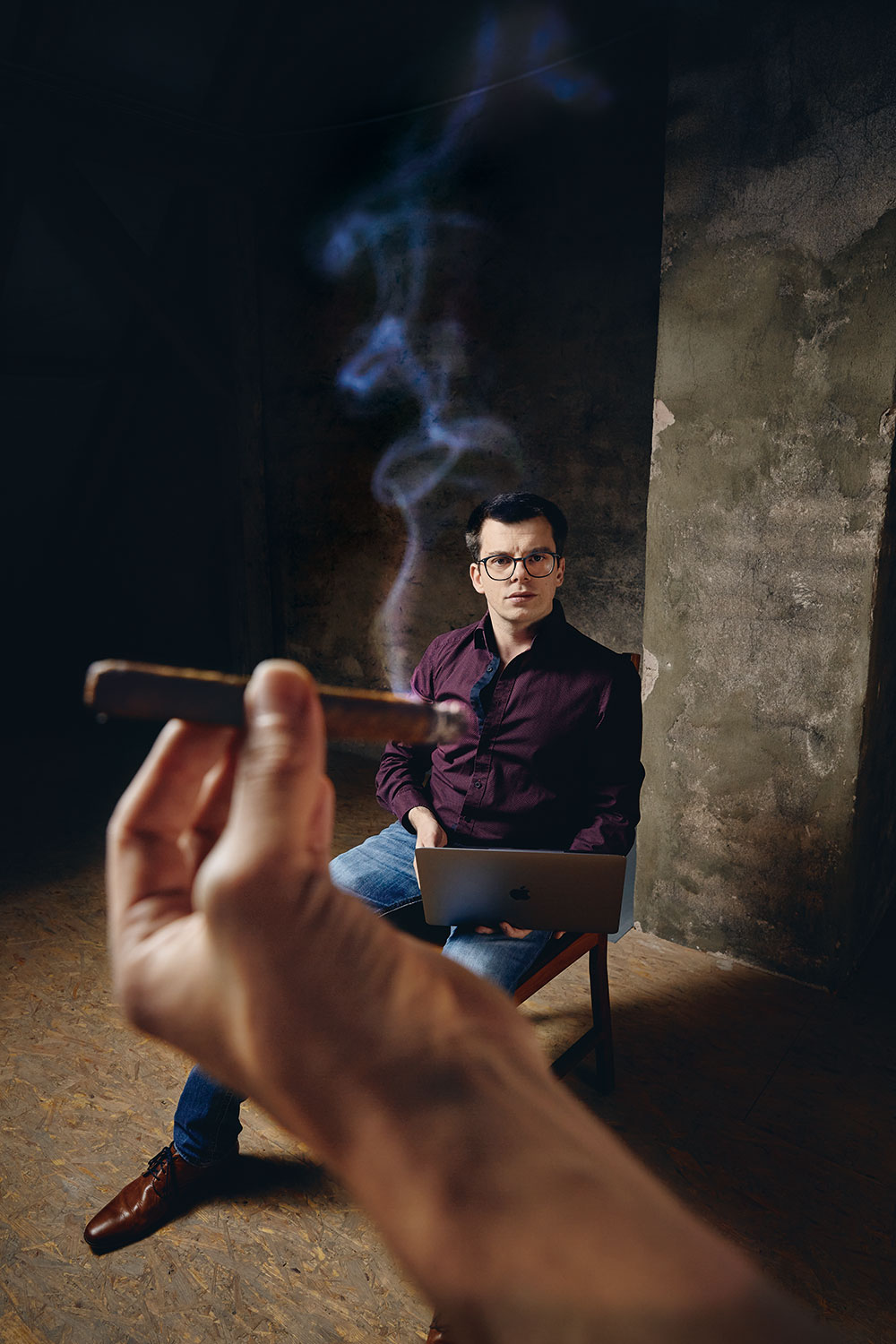Easily combustible
Currently, smoke detection devices are lacking at the most vulnerable places in the apartment. Odor experts at Fraunhofer IIS and Fraunhofer IVV are working on a solution − with sense and the senses.

Can we smell the first charcoal grill on a warm spring day? The last welcoming open fire, there’s still quite a chill towards evening time? Or is a cable on fire in our neighbor’s kitchen? Humans are a good sort. They decide spontaneously, quickly and with absolute certainty − they simply have a good nose for knowing what to do when it comes to life and survival: Pleasure and danger. And the technology?
Smoke alarms are mandatory in all 16 states for private dwellings. Only in Saxony does the law still apply only to new buildings. Smoke alarms are installed in hallways and living rooms, nurseries and bedrooms. But not in kitchens. In 2020, the “Vereinigung zur Förderung des Deutschen Brandschutzes” (German Fire Protection Association) published very clear figures from the statistics on fire damage. The major risk factor in private dwellings is the kitchen. 48 percent of fires in homes break out around the stove and the oven. In 24 percent of cases, fires run rampant from trash cans. In those places where the fire risk is greatest, then, there is currently a dearth of automatic warning devices — even though, another finding from the study, the fires would not have spread as far had the alert been raised by an alarm system. The amount of loss would also remain lower.
For smoke alarms to be able to raise the alert in the most dangerous places too, they have to learn to distinguish between a chop burning in the pan and a kitchen curtain that gets caught in the gas flame. At the moment, however, the vast majority of warning devices do not detect the various concentrations of the different gases. The Fraunhofer Institute for Integrated Circuits IIS and the Fraunhofer Institute for Process Engineering and Packaging IVV are working on a solution in a joint project called “Campus of the senses”. They want to improve safety in the home and reduce the number of false alarms using technical sensors and AI-based evaluations. Sebastian Hettenkofer is fascinated by the idea of teaching a machine to understand the complex world of molecules — and open the door to a machine learning system for detecting fires from odors.
The mathematician at Fraunhofer IIS in Erlangen comes from image processing. In this work, he experienced how far technology has come in terms of replicating − or even surpassing the potential of the human eye. “Analyzing odors is a far more difficult field,” he learned. Yet: “Even smoke holds an unbelievable latent potential.”
But the problems are also daunting. Smoke is volatile. There is no data basis. To be able to measure the target gases and create comparability frameworks, fires have to be simulated in special fire rooms, and this takes great effort. The areas, after all, are highly individualized: Where is there an apartment, with its fabrics, floor coverings and furnishings, that is wholly comparable with the neighbor’s one?
Despite all the problems still to be solved, Sebastian Hettenkofer is firmly convinced about the advantages of an innovative technical solution over the time-honored smoke detector, the nose. “Technology,” he says, is incredibly powerful in terms of objectivity, reproducibility and continuity.” His hope is that he and his team will be presenting for Fraunhofer a prototype that promises to deliver real safety benefits within one to two years. The Fraunhofer man from IIS: “This will be a genuine benefit to society.”
Three questions to Sebastian Hettenkofer
For many years, my research focused on how we can capture the emotional or affective impact of our sensory impressions. I collaborated especially on processes for analyzing facial expressions. Part of this involved getting machines to be empathetic so that they can adapt to human feelings. As a researcher, of course, my curiosity grew: How does a person actually process various sensory impressions? And how can I emulate this using artificial intelligence?
I work in applied research and in the past, have collaborated on a number of successful product developments. I find it particularly gratifying when the result of years of research and development becomes available “over the counter” so-to-speak. I have similar hopes for our research into the digitization of the senses: If, for example, we could translate some of the spectacular aspects of our sense of smell to an AI-supported sensor. Not only would the sensor be able to detect a fire in a room, it could also identify the type of fire to ensure the correct extinguishing agent is used.
Human beings are able to adapt to situations and specialize in what is important to them (safety for example). Technology, on the other hand, scores in terms of objectivity and continuity and is not necessarily limited to what a human being instantly perceives as important or rational. The aim, of course, is to combine these strengths with one another.